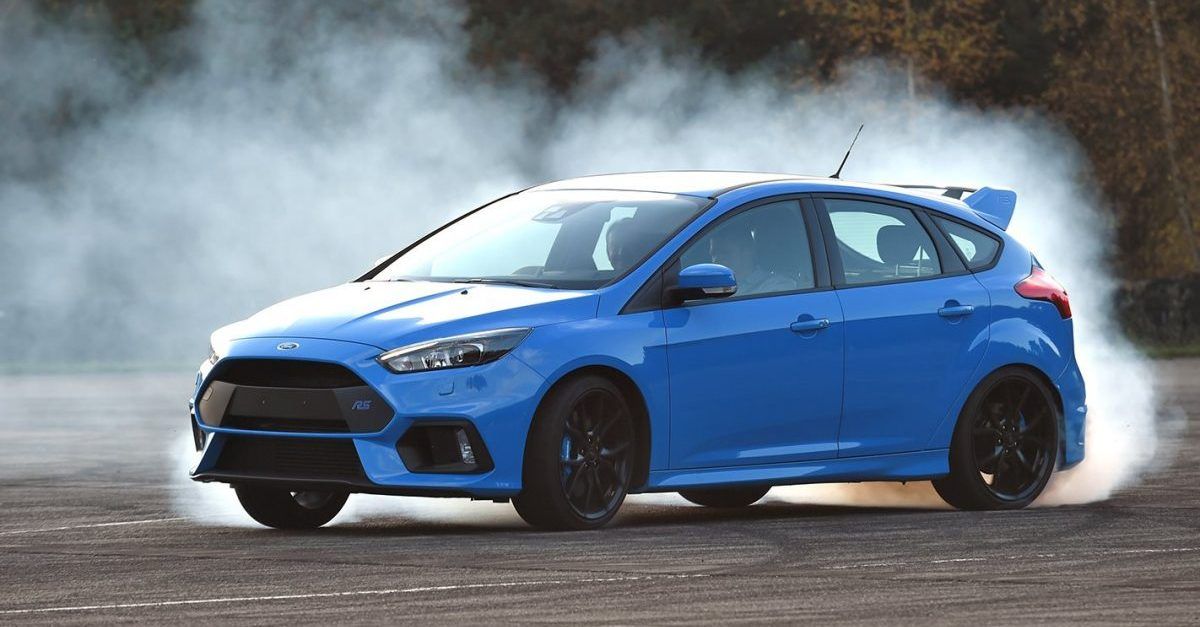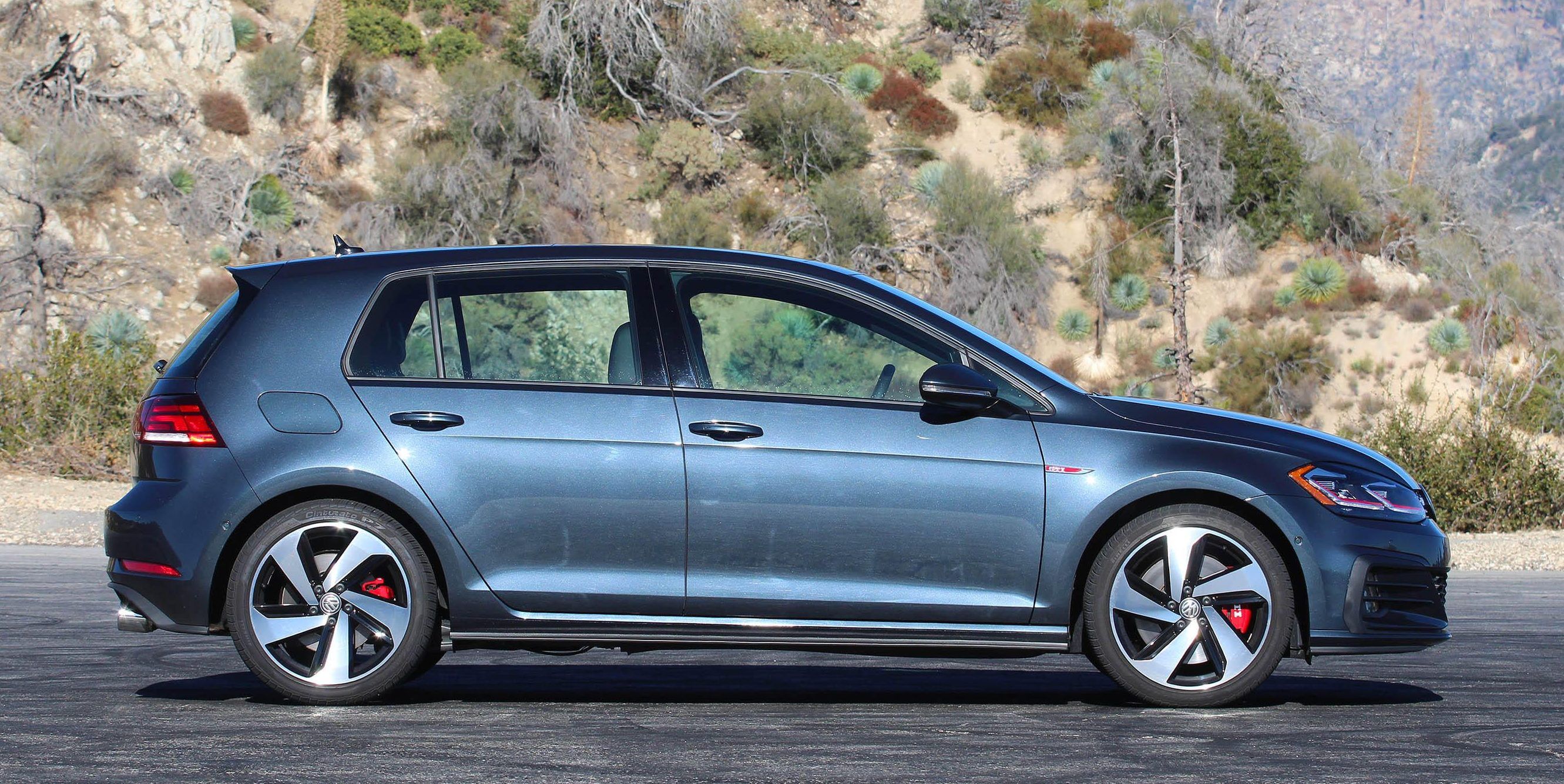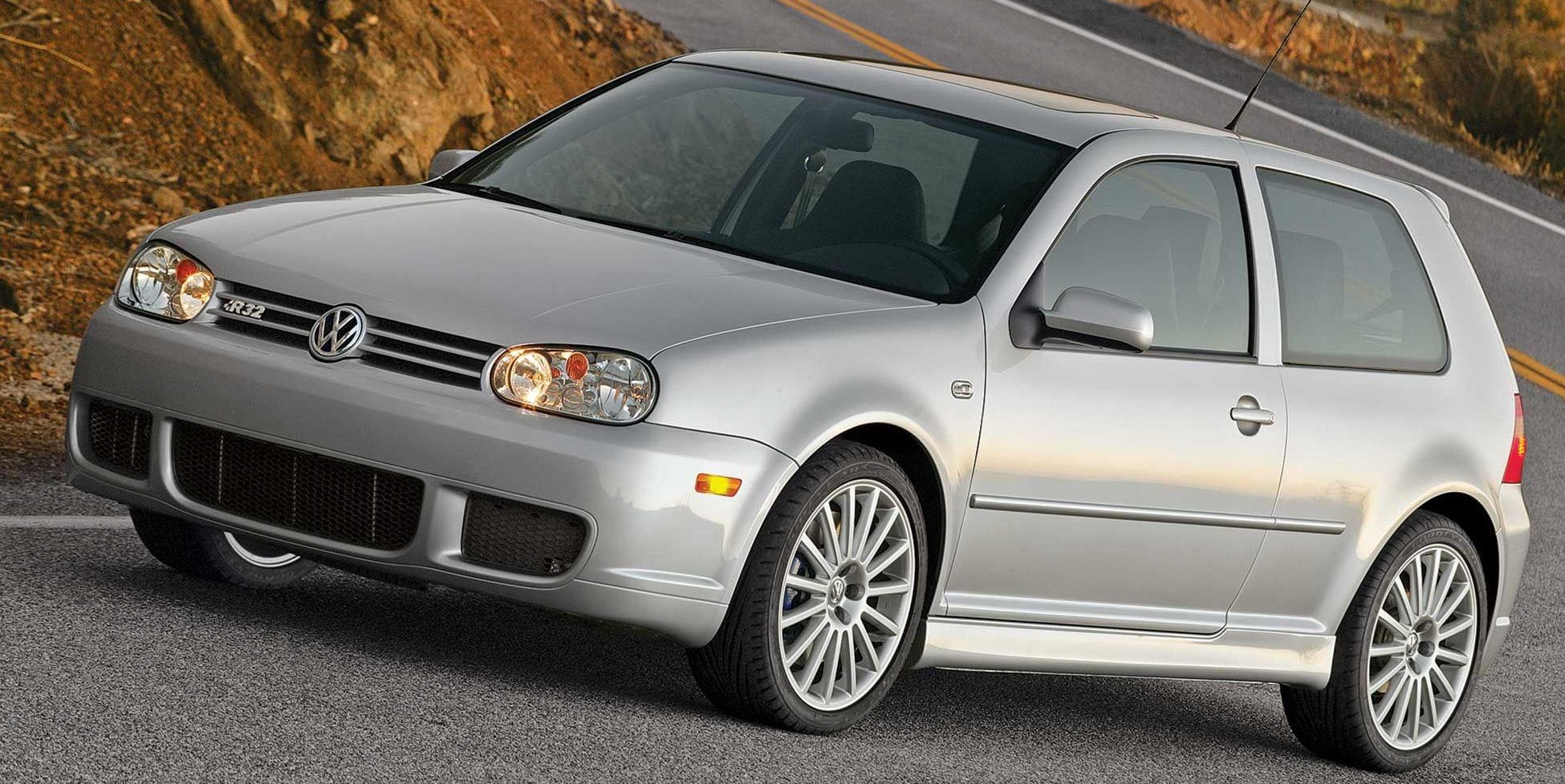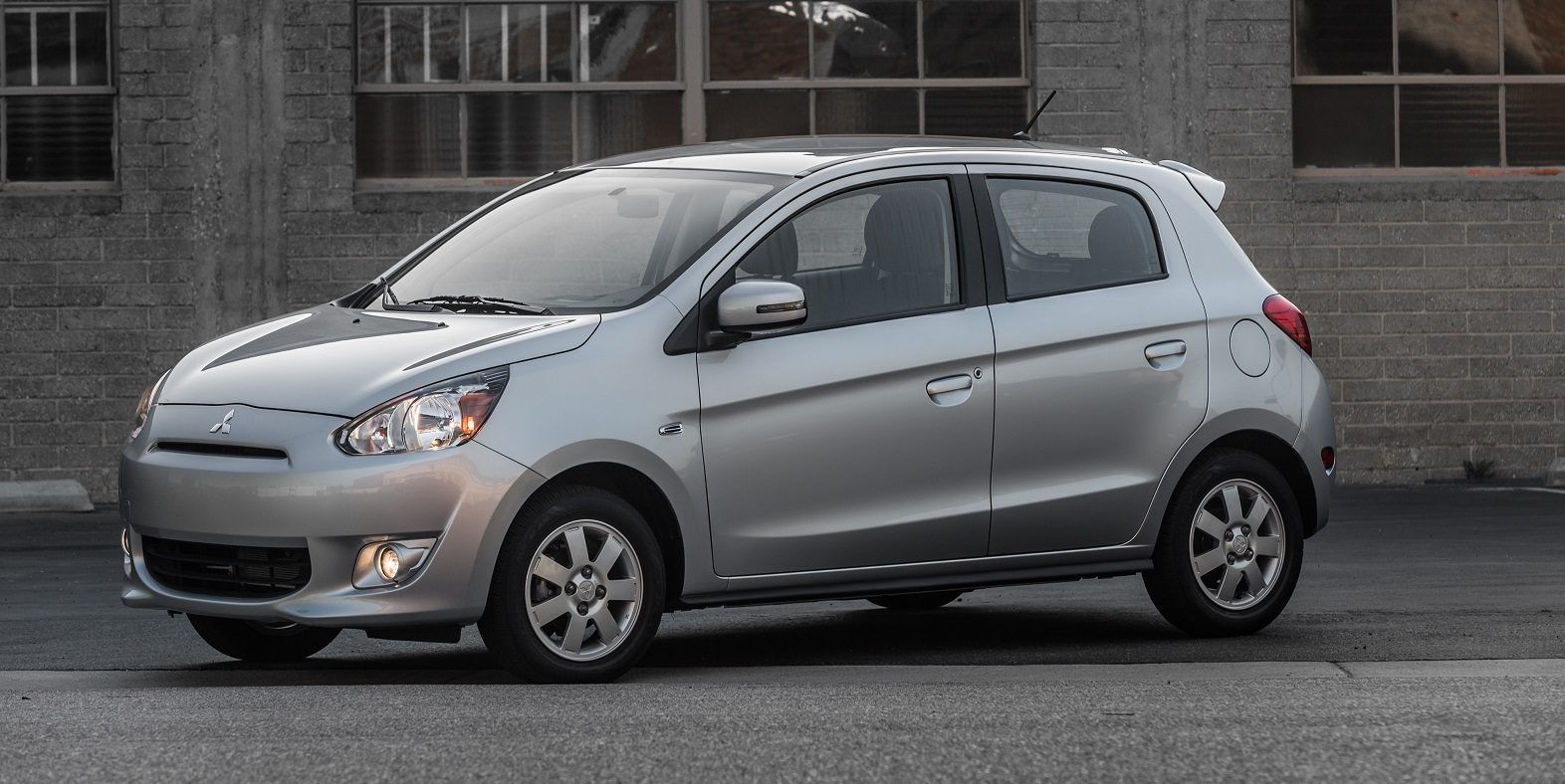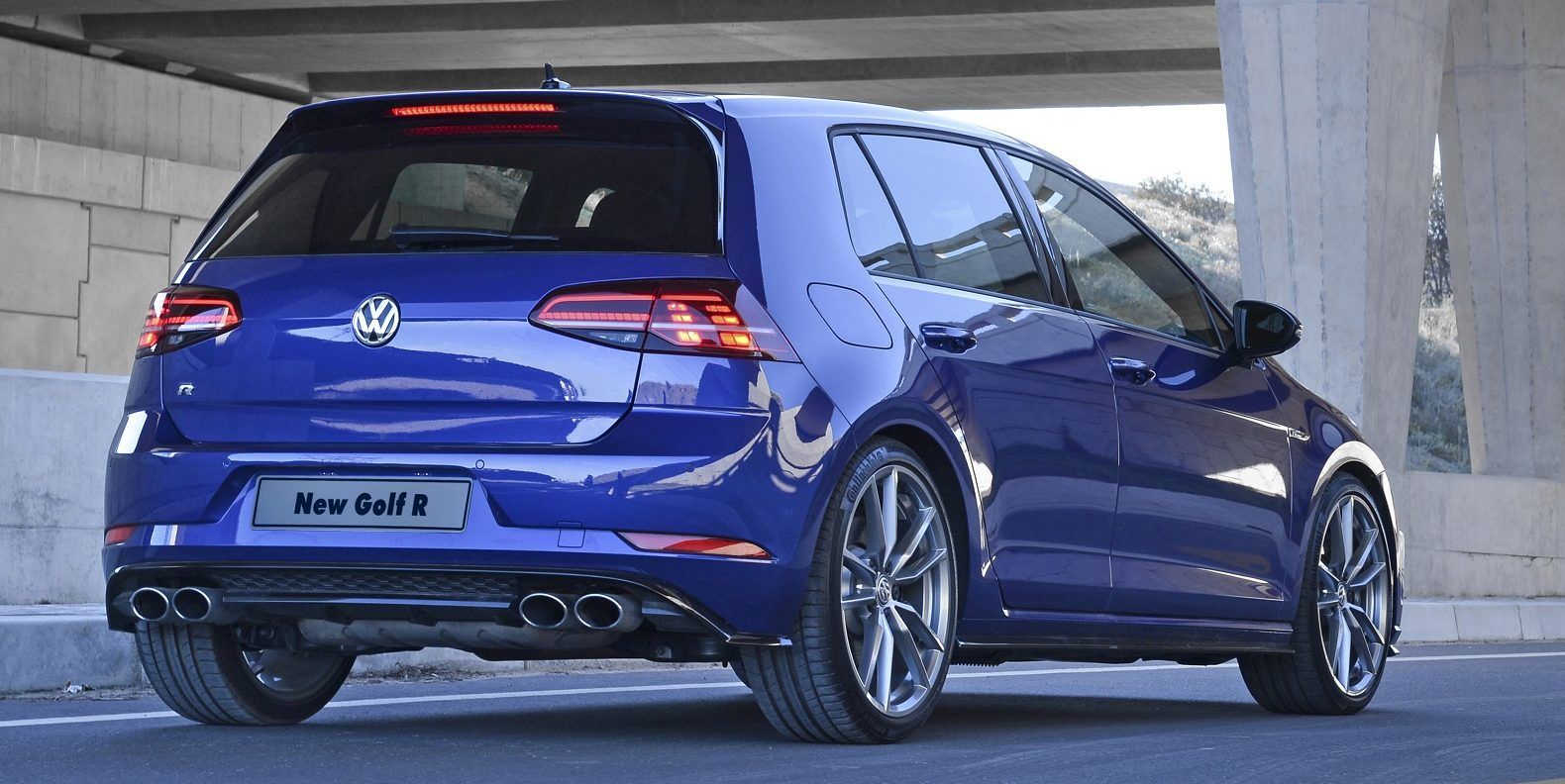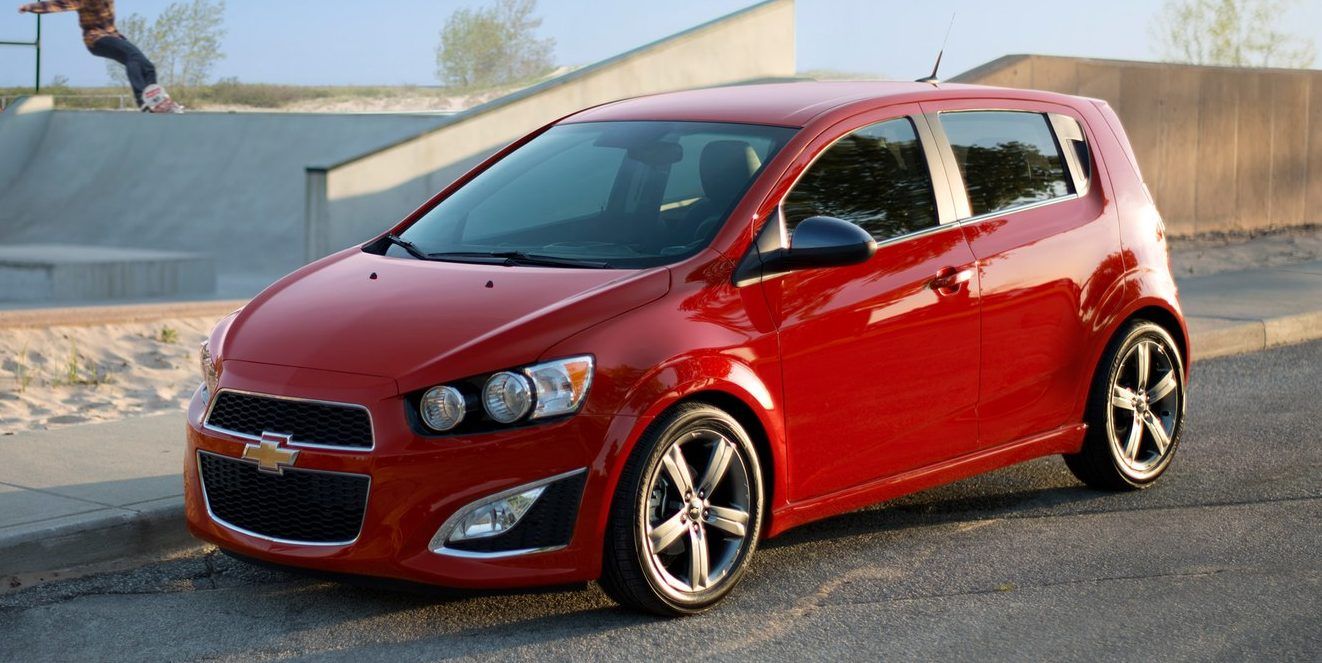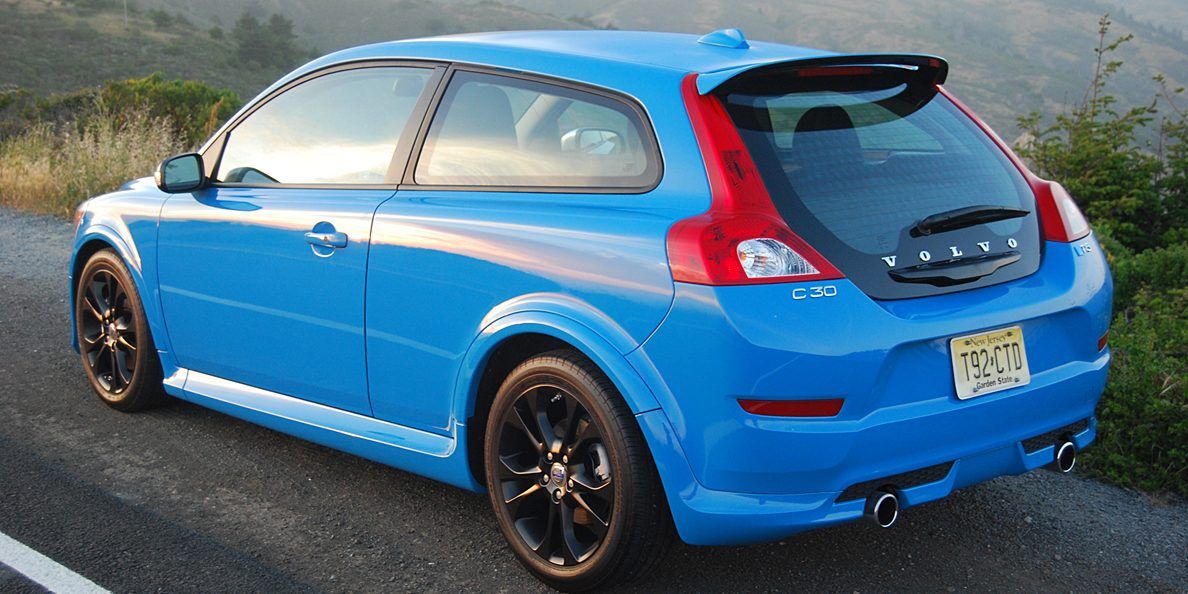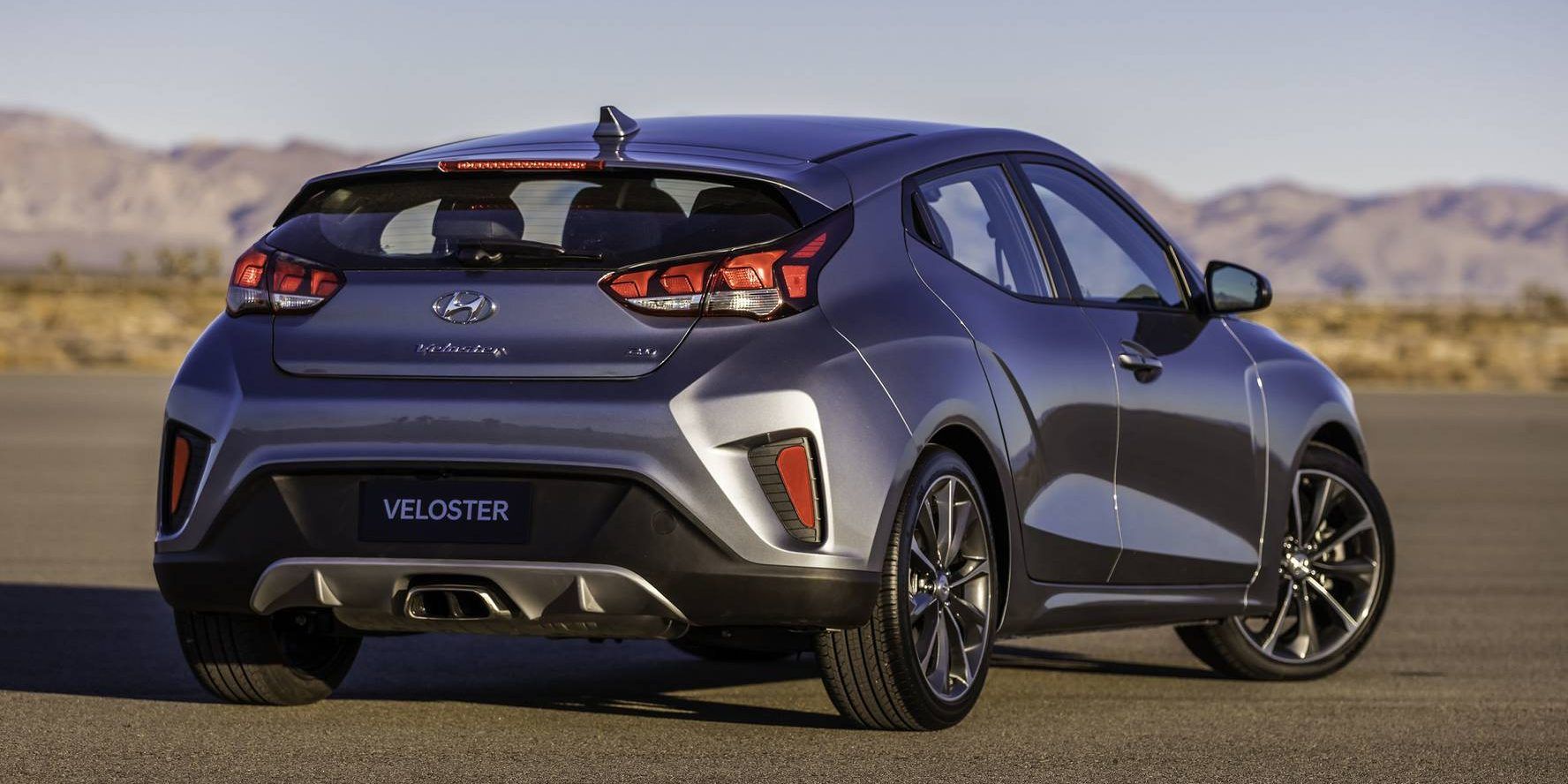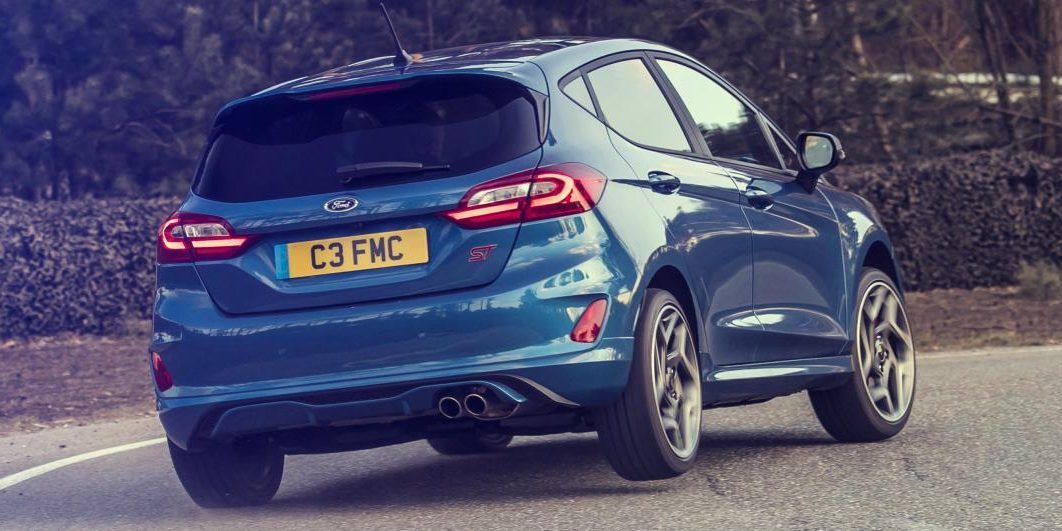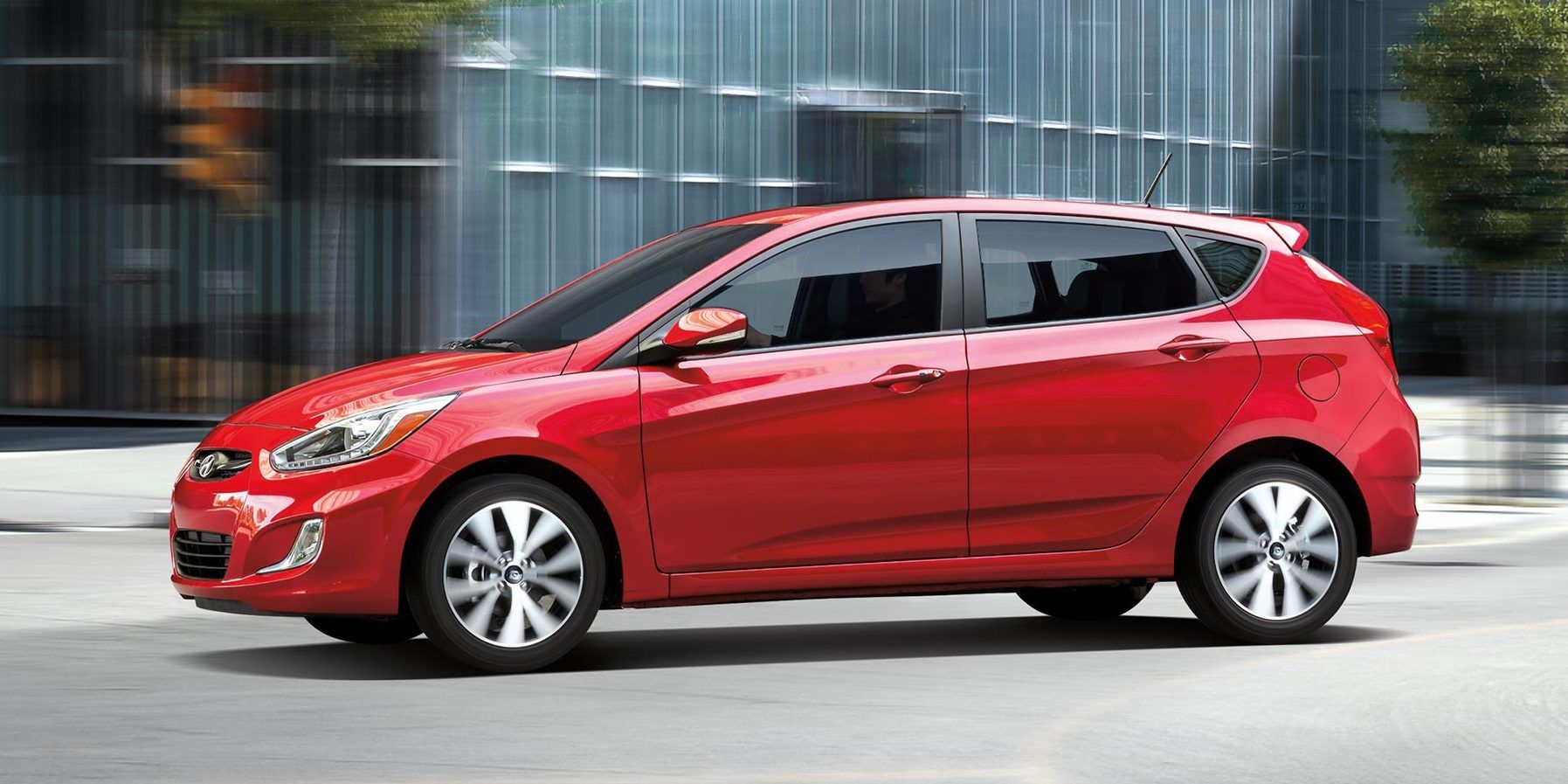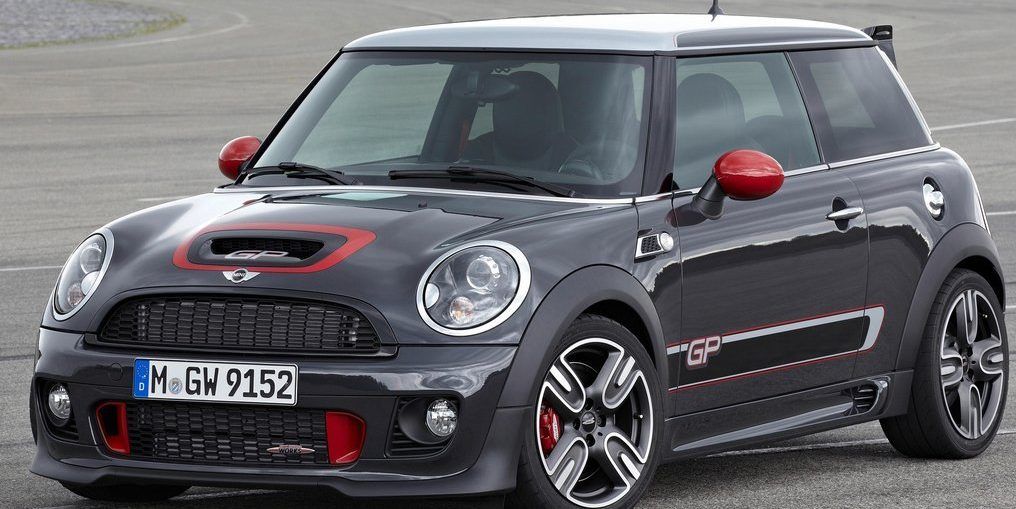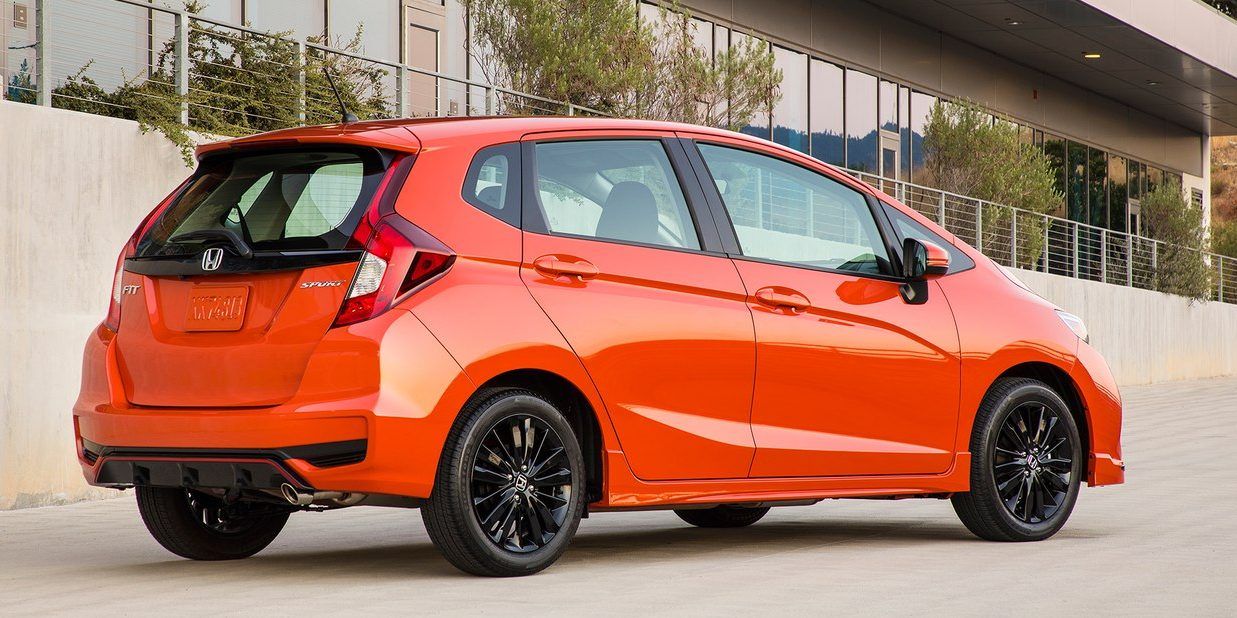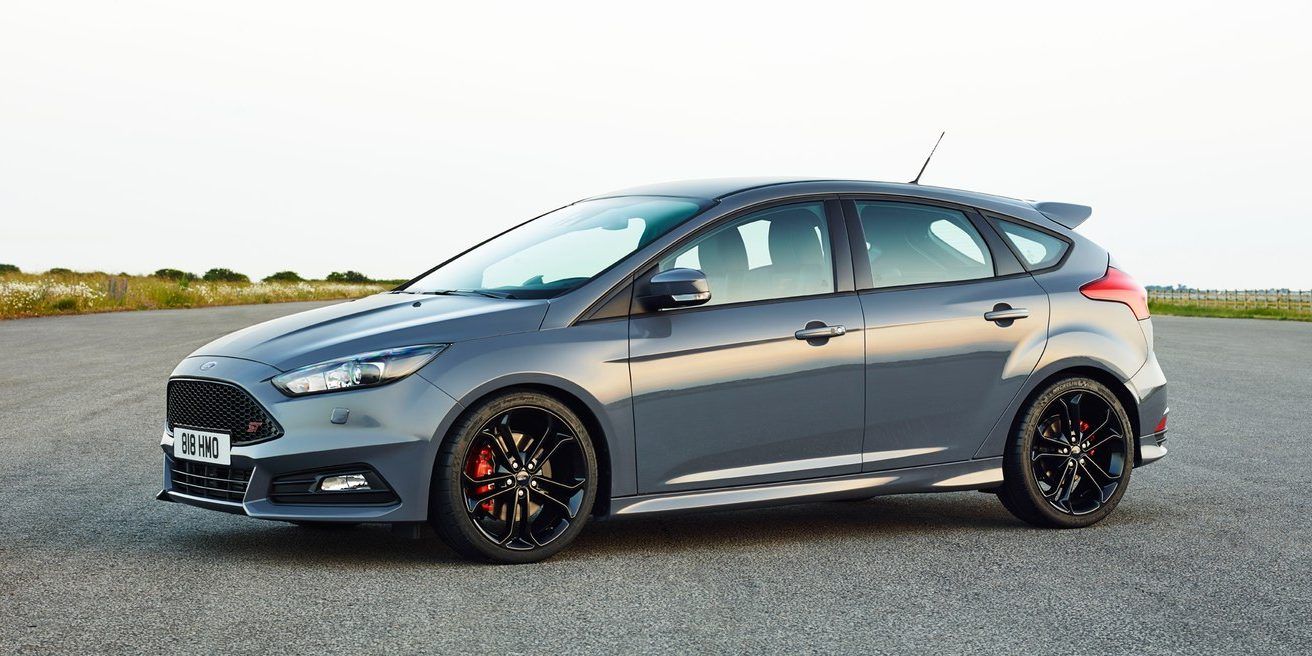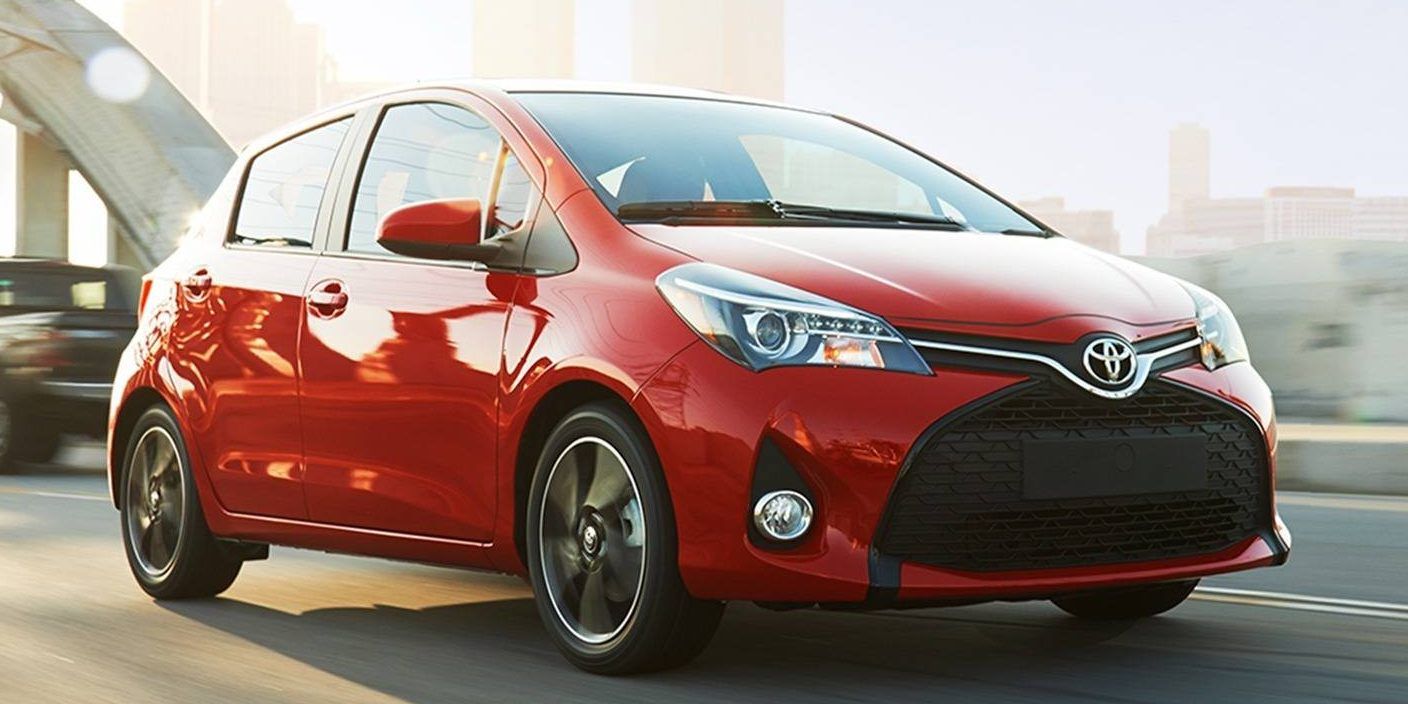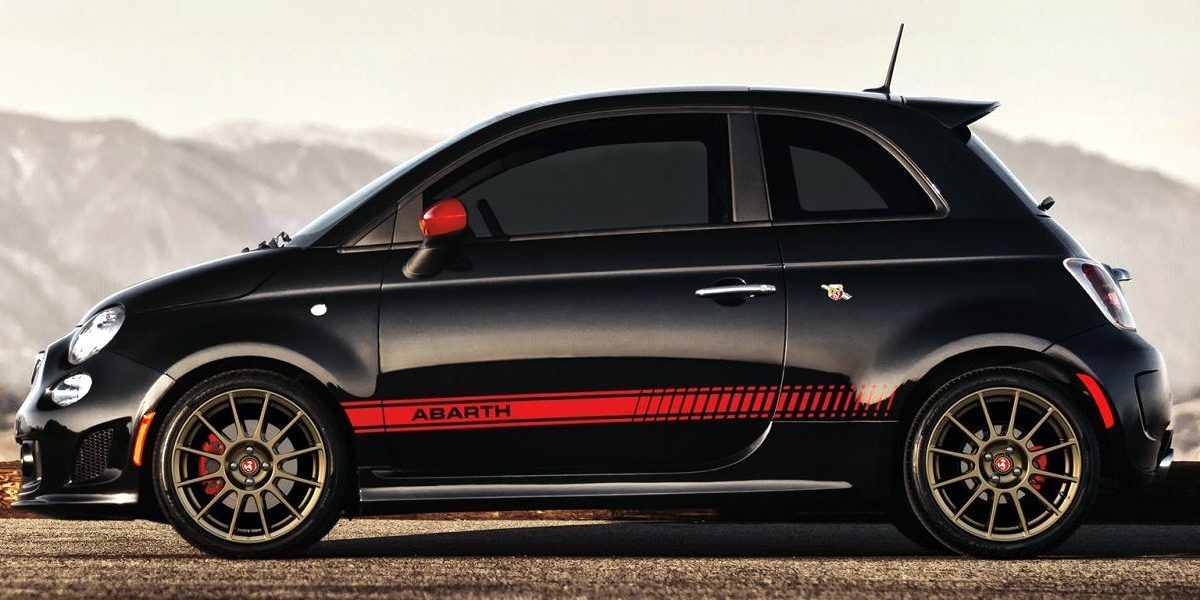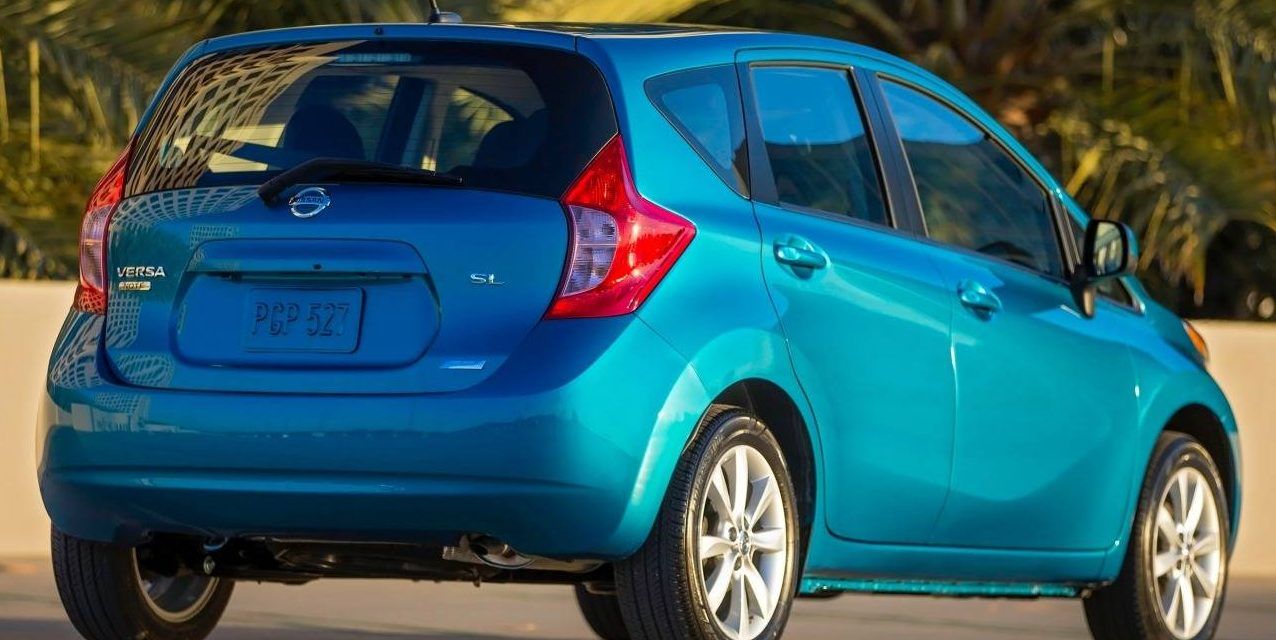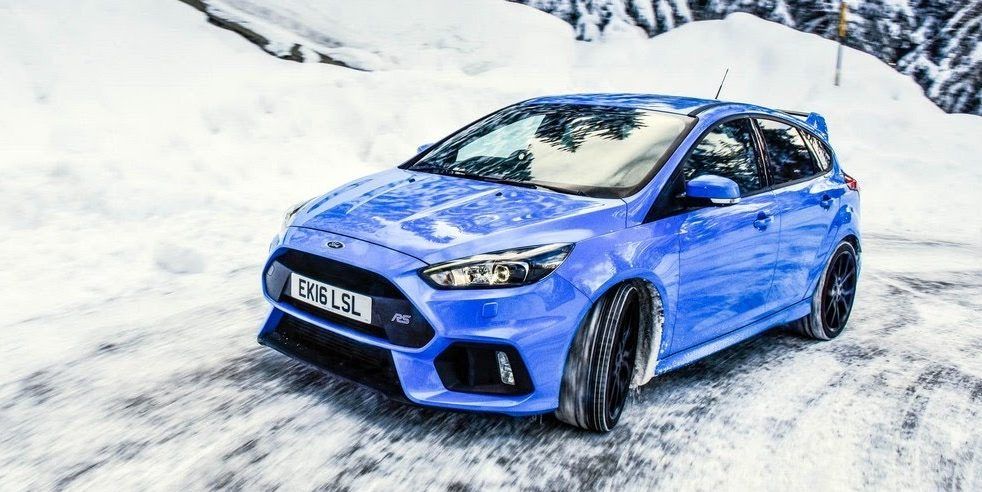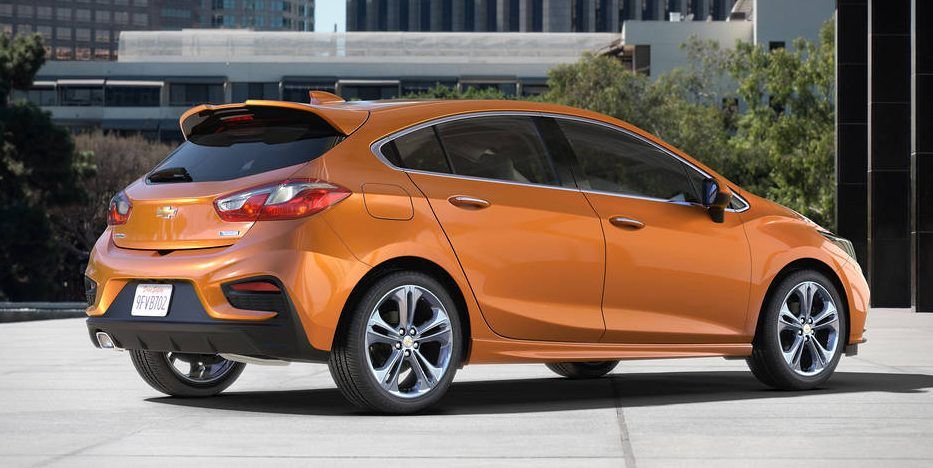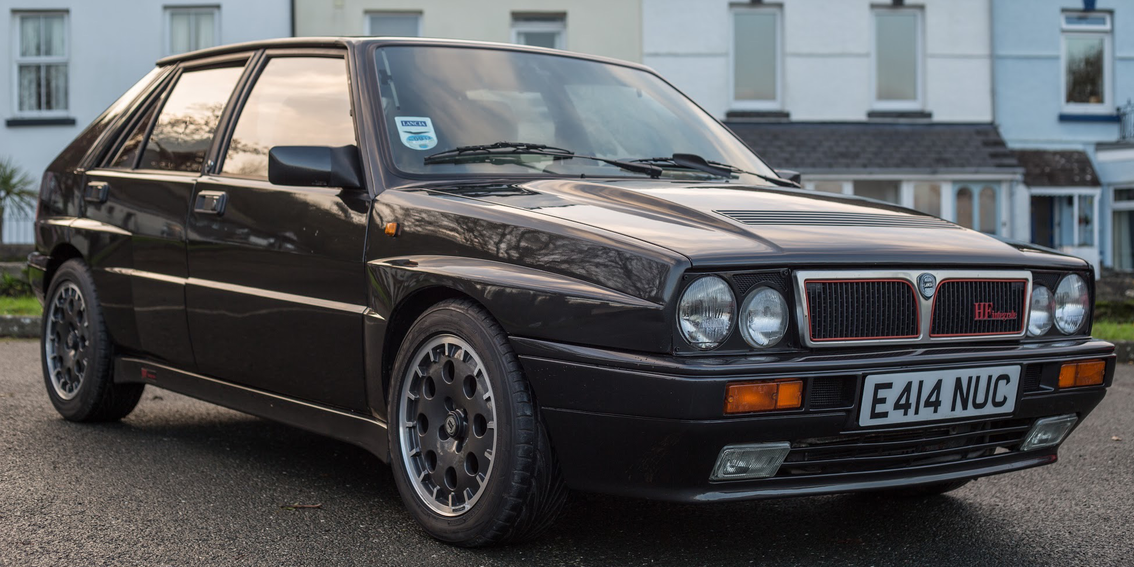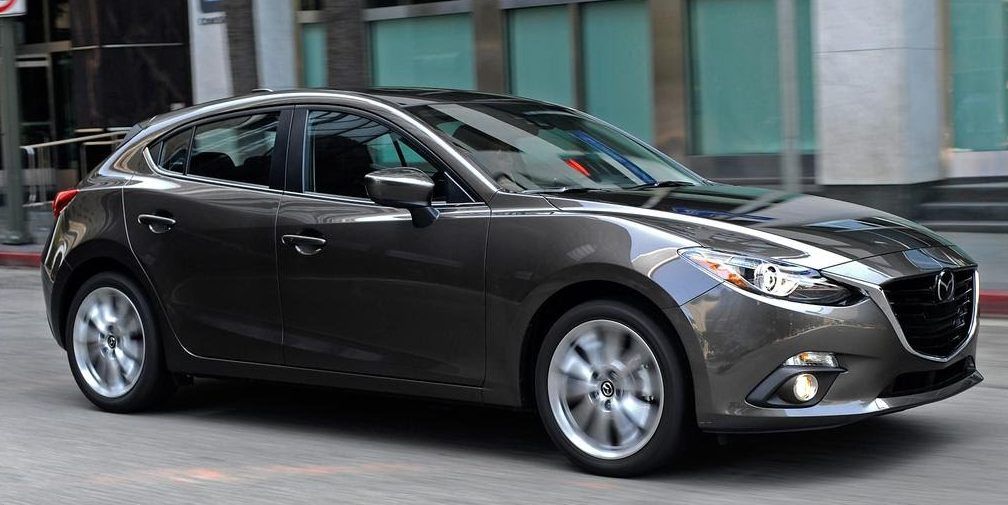Hatchbacks seem to be having a resurgence in America these days, with a variety of manufacturers cranking out affordable hot hatch models that offer utility, comfort, and sporty driving. But anyone who has traveled abroad can attest that the United States is late to the game and the rest of the world's roads are packed with hatchbacks, many of which don't ever make it to the American market. Hot hatches as a genre are peaking in the US, as well, giving consumers the ability to combine fuel economy and cargo space with powerful engines and distinctive style. Technological innovations have helped the hot hatch come a long way, with forced induction allowing for simultaneously lighter, more powerful engines, adaptive suspension increasing both handling and comfort, and manufacturing techniques that increase vehicle reliability and longevity.
Updated February 2022: If you're looking to purchase a fun hatchback, you'll be happy to know that we've updated this article with more information about which models to consider and which to avoid.
Often, the hot hatch is the perfect vehicle for drivers who want to only own one car, rather than having a commuter in the driveway and a weekend toy in the garage. But amidst the wide selection of hatchbacks, made by American and foreign manufacturers, not every one truly qualifies as a hot hatch. Some are simply bland, while others are shockingly underwhelming, even despite the lowest of low prices. Keep scrolling for 10 new and used hot hatches that are worth every dollar, and 10 that are so boring they don't even deserve consideration.
20 Hot: Volkswagen Golf GTI
It's impossible to create a list of the best hot hatches in the world without including the Volkswagen Golf GTI, perhaps the most instantly recognizable and certainly the best-selling hatchback ever made. A case can be made that VW's little Golf and GTI models represented the true beginning of the hot hatch phenomenon when they debuted in 1974. Whether a Rabbit, a Golf, a GTI, or one of the higher powered iterations of the last two decades, Volkswagen seems able to stay just ahead of the quality and fun offered by their competitors.
Originally replacing the rear-engined, rear-wheel drive Beetle, the GTIs of the past and today offer much more storage capacity and interior comfort regardless of two-door or four-door layout, thanks to a front-wheel drive, and a series transverse-mounted, peppy engines - whether they're turbocharged or not. Flashiness isn't the name of the game for a GTI off of the dealer floor, but clever interior design and a functionally informed exterior aesthetic make the car attractive in a utilitarian manner that doesn't scream out how hip and cool a GTI can be. Plus, tons of aftermarket options exist for the tuner and mod crowd to improve performance as well as allowing for owners to make their GTI unique.
19 Not: Geo Metro
And last and also least, the Geo Metro hatchback, one of the most notoriously underpowered and cheap cars ever made. The result of a team-up between Suzuki and GM, the Metro was known as the Cultus in markets outside the United States, and can be thought of as the predecessor of the Chevy Spark, in a way. With a 1.0-liter three cylinder engine, a curb weight under 1,700 pounds, and little in the way of safety features, the Geo Metro seems like it might have been actually dangerous to drive either in town or on the highway.
The Geo Metro was such an economically oriented car that it was originally sold new, from the factory, without even hubcaps to cover its steel wheels. Finding an example that is farther from the essence of a hot hatch is nearly impossible, though the Geo Metro does have its fans who love it for the simple and reliable driving life it represents. Great fuel economy is a plus, but the most suitable place for a Geo Metro to live today seems like it would be behind an RV, used for runs down to the store to pick up groceries when the RV is already connected to electrical and plumbing.
18 Hot: Volkswagen Golf R32
The R32 Golf variant debuted in 2003 as a performance enhanced, top of the line Mk4 Golf intended for Volkswagen customers for whom a regular GTI just wasn't enough. A long list of improvements over the base GTI helped the R32 gain a huge following, from highly bolstered interior seats to a subtly lowered exterior with a different body kit, plus a burbly VR6 engine under the hood with unique exhaust that allowed for improved flow and volume over 3,000 RPM. The R32 also reintroduced all wheel drive to the Golf platform, though previously a couple of AWD models had lifted the chassis for off-road use, whereas the R32 was designed as more of a canyon carver than a rock crawler.
The R32 actually shares a ton of its mechanicals with the range-topping Audi TT in 3.2-liter spec, which debuted right around the same time. Both feature either a six speed manual or the world's first production dual clutch transmission sending power to a Haldex-based Quattro system which biases towards the front axle, but can reportedly send power to the rear in as little as one eighth of a wheel turn. Production was limited to 5,000 units, and today a well-kept R32 can still fetch its original sticker price or even higher.
17 Not: Mitsubishi Mirage GT
The Mitsubishi Mirage is one of the least powerful cars available on the market today. It is powered by a 1.2-liter, normally aspirated three cylinder engine that only makes 78 horsepower and 73 lb-ft of torque. The result is a 0-60 time of over 10 seconds, on the way to an optimistic top speed of 105 miles per hour. The lack of power makes the Mirage only a commuter car to be considered for drivers who never even get on the freeway, ridiculous given that the Mirage still costs over $14,000. Though, to be fair, it does come with a solid warranty to back up the underwhelming package.
Car and Driver didn't mince words when calling out the Mirage GT for "its particularly egregious abuse of the GT [for Grand Touring] label, which came about decades ago as a descriptor for fast, luxurious sports cars that made covering long distances a pleasure. We’re talking cars from the likes of Ferrari, Porsche, and Aston Martin, to name just a few prominent pedigrees. Sure, the term has been applied to lesser cars, but the Mitsubishi Mirage GT hatchback is a long way from that idea. A very long way."
16 Hot: Volkswagen Golf R
Today, the highest spec Golf available at VW dealers is the Golf R, a modern hot hatch at or near the top of the heap, a subject of great debate and one that is subject to personal preference as much as simple stat comparisons. The Golf R can be had with either two or four doors, just like its GTI brethren, but it upgrades almost everything over the lower spec models. All wheel drive through a Haldex system allows for improved traction, while a turbocharged engine shared fellow platform mate, the Audi S3, cranks out 296 horsepower and 280 lb-ft of torque. With launch control activated and a dual clutch gearbox, the Golf R can sprint to 60 miles per hour in only 4.5 seconds.
Thankfully, a manual transmission is still offered on the Golf R, which should be any enthusiast's preference, but is still an option that many manufacturers have allowed to lapse in favor of slightly faster (but less engaging) automatic transmissions. Quad exhaust at the rear, stiffer suspension lowered over larger and wider wheels, and a slightly more aggressive body kit differentiate the R from the GTI and base Golf, as does a price tag right around $40,000, depending on options packages.
15 Not: Chevrolet Sonic
The Chevy Sonic is sold in America under the Chevrolet marquee, but is actually a product of fellow GM subsidiary Daewoo. Formerly known as the Aveo, the Sonic is a subcompact hatchback that seems perfectly built for commuter cars on the foreign market. That GM decided to bring it to America seems surprising, given the low-end market competition it will face. Still, simple styling define the Sonic, with none of the excessively curvy lines that so many manufacturers are adopting today.
The Sonic is available with either a 1.8-liter normally aspirated engine creating 138 horsepower and 125 lb-ft of torque paired to a five speed manual or six speed automatic. Also available is a 1.4-liter turbo four which creates identical horsepower but 148 lb-ft of torque while paired to a six speed manual (or six speed auto) transmission. Despite its entry-level amenities, though, a Sonic costs over $22,000 while offering fuel economy significantly behind its competition. The sad fact is that the Sonic could potentially become a car that approaches being the real deal, but Chevy's (and GM's) overall strategy and pricing for the car prevents it from ever reaching hot hatch status here in the United States.
14 Hot: Volvo C30 T5 R
While many less informed drivers may think of Volvo as a manufacturer of ultra-safe station wagons for soccer moms, in reality the Swedish company has a long history of performance tuning their cars, from models upgraded in house to the Polestar branch which recently split from Volvo almost entirely. In 2006, Volvo launched the C30 hatchback, a smaller offering from the brand, designed intentionally as a modern take on the classic P1800 ES. A variety of engines and options packages followed over the C30's seven-year production run, but the top of the line variant was the limited edition T5 R, released featuring a range of improvements by Polestar.
Cramming a turbocharged inline five under the hood of a sub-3,000 pound hatch is always a great idea, and Polestar upped the 2.5-liter engine's output to 250 horsepower and 273 lb-ft of torque. A six speed manual transmission, stiffer suspension, a quicker turning ratio, and Polestar's classic blue paint job also helped to differentiate the T5 R from the various lower spec models. Unfortunately, Volvo did make the decision to keep weight low by only offering front-wheel drive on the T5 R, but amongst front-wheel drive hot hatches of its era, the C30 T5 R was competitive in almost every facet.
13 Not: Hyundai Veloster
The Hyundai Veloster debuted in 2011 as an attempt at wooing younger buyers with a sporty exterior that departed from all of Hyundai's previous offerings. The little coupe disappointed, though, despite even offering a relatively powerful, highest optioned, turbo engine cranking out 200 horsepower and 195 lb-ft of torque. The problem was that the little car, which sat four people thanks to those odd rear doors, weighed in at over 3,000 pounds in the highest spec. A 132 horsepower engine was standard, belying the Veloster's aggressive sounding name and style to match.
The fact is that rather than representing a new contribution from Hyundai, the Veloster is essentially a cartoonish body transplanted onto the body of an Elantra sedan. Don't let the looks fool you, an Elantra is certainly not hot, nor is it sporty in any way. Front wheel drive, tiny engines, and a sluggish transmission define both cars, while sloppy suspension and vague steering certainly don't add to the overall package. A Veloster costs over $22,000, too, a fairly high price to pay just for a car that offers a unique exterior without the capability to back up its looks. Hyundai keeps making the Veloster, but rather than starting from scratch, keeps updating it alongside its Elantra sibling.
12 Hot: Ford Fiesta ST
Though European manufacturers have produced a wide range of hatchbacks over the last few decades, American brands have often been unable to join in on the fun. Even Japanese and Korean hatches make their way to the states, though the hot hatchback selection as a whole is much smaller in America than in any overseas market. Nonetheless, Ford got into the game with its Fiesta hatchback way back in 1976, which was in fact sold both domestically and, to much more success, abroad.
In 2018, the Fiesta yet again offered a performance-oriented ST package, with a 1.5-liter turbocharged three-cylinder engine under the hood churning out 200 horsepower. While that number might seem low, it feels much higher in a car that tips the scales at under 2,700 pounds. The Fiesta ST is only available in front-wheel drive, but Ford helps to compensate for the lack of rear axle power by adding a limited slip differential to help keep the car planted. With a six speed manual transmission, the Fiesta ST is one of the smallest hot hatches on the market, though certainly one of the most peppy. Ford's recent shift in design aesthetic benefits the exterior styling of the Fiesta, as well.
11 Not: Hyundai Accent
Manufacturers Kia and Hyundai are making their case in the American auto market by offering impressive warranties on their affordable cars. Hyundais typically pair tame styling with the bare bones essentials that make a car a car. A classic example of Hyundai's approach is the Accent, available in hatchback form over four generations of redesigns. 2018 saw the debut of the Accent's fifth generation, but the hatchback was dropped from the lineup in the United States (though it is still available in Canada and Mexico).
A large part of why the Accent hatchback is no longer for sale in America is probably because of just how disappointing of a driver the car is. Accelerating to 60 miles an hour takes an interminable 8.6 seconds, or a mind numbing 9.9 seconds when equipped with an automatic transmission. A base price of almost $16,000 didn't help the Accent hatch, since it cost thousands more than its competitors, in a package that Car and Driver summed up unkindly: "As the direct descendant of the self-destructing, Reagan-era Hyundai Excel, the Accent benefits from low expectations." Perhaps American consumers should be glad that the Accent hatchback won't be sold in the future, and certainly won't be on any future lists of hot hatches.
10 Hot: Mini Cooper John Cooper Works GP
From the incredible car chase in The Bourne Identity to a starring role in The Italian Job, Mini Coopers of every generation and iteration instantly recognizable as one of the iconic designs in automotive history. Impressive interior space is complemented by the distinctive style of the Mini Cooper, with various factory paint jobs going along with a wide selection of available performance packages. The most desirable of BMW's recent Mini Cooper offerings is the John Cooper Works GP package, which includes a sunroof and rear seat delete for weight savings, bigger wheels, power output increased to 214 horsepower, as well as a limited slip front differential and a six speed manual transmission.
The JCW GP's front wheel drive layout might seem odd for a BMW product, but it is keeping in the tradition of every Mini since the first came off the assembly line in 1961. The limited edition production run only led to 415 numbered John Cooper Works GP cars being shipped to America, so finding or even seeing one can be rare, but for auto enthusiasts who know their hot hatches, those distinctive red rearview mirrors and wheels set the GP apart from all the other fun Mini Cooper iterations.
9 Not: Honda Fit
The Honda Fit has been in production since 2001, and over three generations, the concept has remained the same: small, utilitarian, and boring. The Fit is practical, yes, with plenty of room, Honda's legendary reliability, and an efficient powertrain. But for consumers looking to buy a quick or sporty hatchback, the Fit just won't be the right fit. Under the tiny hood, a 1.5-liter inline four creates only 130 horsepower (or 128 if paired to a continuously variable transmission) and propels the Fit from 0-60 in 8.2 seconds. Highway fuel efficiency is good, but not great, at 36 MPG, while in town the Fit suffers from a lack of turbocharging resulting in 29 MPG.
Honda makes up for the Fit's underwhelming drivetrain by packing it chock-full of tech, though, and automated emergency braking, lane assist, and adaptive cruise control are all check boxes on the options list, while a 7-inch touchscreen display supports both Android Auto and Apple CarPlay. But all the tech in the world can't bump the Fit up into the realm of hot hatch, it's simply a hatch with a fair amount of user-friendly additions which serve to distract from the mundane driving it allows.
8 Hot: Ford Focus ST
Ford's mid-sized (relatively, compared to some other hot hatches on the market) offering is the Focus, which is available in ST trim much like its smaller Fiesta sibling. The Focus debuted in 1998, but received a major shift in design ethos for its third generation refresh in 2011. The first Focus ST came a year later in 2012, featuring a 252 horsepower, 2.0-liter turbocharged EcoBoost engine. Recaro seats and a six speed manual transmission improve driver comfort and engagement in the Focus ST, while painted brake calipers, larger alloy wheels, that rear spoiler, and aggressive front grilles differentiate the Focus ST's exterior from its more pedestrian stable mates.
The Focus ST represents Ford's continuing dedication to their hatchback lineup, though the majority of sales still come from foreign markets. America also doesn't receive the 2.0-liter Duratorq diesel engine that is available abroad, which features slightly reduced pear horsepower but a big bump in torque and efficiency. For front wheel drive cars, only so much power can truly be utilized, and the Focus ST is a hot hatch maximizes the performance and agility of the drivetrain and body style, all in an attractive and useful package and at an affordable price point.
7 Not: Toyota Yaris
Toyota has been building the Yaris since 1999, their entrant into the world of cheap and efficient hatchbacks that offer efficient driving and complete lack of any fun characteristics. Alternately badged as Scions and Toyotas, the Yaris (or its iA conterpart) manage to be entirely impressive in the manner with which they've completely left behind the concept of the hot hatch.
A current Yaris hatchback can accelerate from 0-60 in 10.2 seconds, thanks to a sluggish 106 horsepower, normally aspirated inline four engine paired to a ridiculously antique four speed automatic. At least curb weight is below 2,500 pounds, otherwise the Yaris with its vertical profile might not even be able to reach highway speeds at all, much less on an uphill onramp. Toyota seems to have totally given up on the Yaris as anything other than the blandest way to get from point A to point B, as their marketing slogan for the model is simply, "It's a car!" At least on what can only be used as a commuter vehicle, the seats should be comfortable, but US News reviewed the Yaris and determined that it not only "...has uninspiring driving dynamics, [but] its seats aren't very comfortable." Obviously, the GR Yaris is a whole other beast, and definitely one to purchase.
6 Hot: Fiat 500 Abarth
Fiat's modern resurrection of their tiny 500 hatchback has proven to be a remarkable success, both in America and all around the world. The cute little car is pure style, in a lightweight body with surprising space on the interior. Available with gas and electric engines (plus diesel in foreign markets), both manual and automatic transmissions, and a wide range of color combinations that help the car pop out from its surroundings, there's a Fiat 500 for just about everybody - even the van-like 500L and the crossover 500X.
But it's the Abarth-tuned Fiat that truly makes it onto the list of great hot hatches, with more aggressive body cladding, paint jobs, and wheels that set it apart from its more basic lineup mates. Abarth's scorpion logo represents a dedication by the Italian racing brand's heritage of adding extra punch to smaller cars, which they've managed to do with wonderful results for the Fiat 500 Abarth. The turbocharged 1.4-liter engine only cranks out 133 horsepower and 152 lb-ft of torque, but keep in mind that the Fiat 500 weighs in at just around 2,500 pounds. A truly snarling exhaust note envelops the Fiat 500 Abarth wherever it goes, hinting at the fun driving experience offered by the little car.
5 Not: Nissan Versa Note
The Nissan Versa Note is another small hatchback, with sharp edges and a profile that blends in with other efficiency-oriented cars on the market today. One of the cheapest cars of all classes available in America, the Versa's price for sedan or hatchback models reflects the overall quality of the actual product, which is disappointing at best. At least the almost vertical rear allows for relatively expansive cargo space in such a small package, increasing the Versa's utilitarian aspect. Tiny wheels, narrow tires, and a downright strange side window arrangement are other highlights of the Versa's exterior.
Car and Driver summed up the Versa with little enthusiasm, writing, "If you like to drive, keep shopping. Reporting here on the sedan (the Versa Note is its hatchback twin), the Versa has insultingly flimsy materials. Its wimpy 109-hp four-cylinder makes for slow acceleration but is quite fuel efficient." That acceleration includes a 0-60 time of over 9 seconds. Both a continuously variable and manual transmissions are available, but for anyone hoping to have fun with a stick shift and clutch pedal, the Versa is probably not the best bet. Instead, the Versa just sticks to its guns as efficient - in price, with fuel, and in the speed with which it is easily forgotten.
4 Hot: Ford Focus RS
When it comes to outright power and performance in a hot hatch package, the Ford Focus RS has to be considered at the top of the list in today's market. Though in competition with the VW Golf R, the Focus RS lacks perhaps some of the design simplicity and everyday utility of its rival, it offers superior power stats and a more race derived drivetrain. The Focus RS is the latest in Ford's heritage of RS monikered cars, from the world-beating RS200 of the 1980s to the Ford Escort Cosworth RS of the mid-1990s.
Packing a turbocharged 2.3-liter engine borrowed from the Mustang, the Focus RS boasts 350 horsepower and can sprint to 60 miles per hour in only 4.7 seconds thanks to the traction of its torque vectoring all wheel drive system. With launch control, drift mode, and an optional rear limited slip differential in the mix, plus even more aggressive additions to the body kit, the Focus RS easily manages to outclass its ST stablemates.
3 Not: Chevrolet Cruze
Chevrolet recently added a hatchback body style to its Cruze model lineup, hoping to cater towards a younger audience. Unfortunately, considering the Cruze as a hot hatch just doesn't quite add up, despite a couple of turbocharged engines and the rear spoiler bolted onto the rear. The newest version will drop the manual transmission option, since very few models so equipped were actually selling. Perhaps the addition of a higher spec engine would help, since the Cruze's range topper offers 153 horsepower and 177 lb-ft of torque in a car pushing up towards 3,000 pounds.
Clearly, consumers shopping for a hot hatch had turned to other options, since despite a well-appointed tech package, no manual transmissions were moving off the lot. The fault seems likely that Chevy was more interested in efficiency for the Cruze than for sporty, fun driving, as the car does boast an impressive rating of up to 38 highway MPG, slightly less than the sedan version. Motortrend accepted the Cruze as a cheap option in the hatchback space, but admitted that "On the road, the Cruze felt buttoned down... but it felt less so at low speeds." With little power, and now without even a manual transmission, there are many better hatchback options on the market today.
2 Hot: Lancia Delta HF Integrale
While today's Volkswagen Golf R and Ford Focus RS may offer what seems like the relative novelty of all wheel drive and sporty performance to American consumers, the true pinnacle of hot hatches is almost certainly the Lancia Delta HF Integrale. Built from 1987 to 1993, in a variety of homologation models, the Integrale was a road-going version of the most successful rally car in the history of rally racing. Despite looks that to most people might seem like a modded out VW Rabbit, the Integrale is a much more special car thanks to its rally-bred heritage and the performance it offers.
By the Evo 2 Integrale, horsepower from the 2-liter, sixteen valve turbocharged engine was up to 212 while torque was up to 232, all in a lightweight hatchback body that weighed in at under 3,000 pounds. Throw in viscous coupling all wheel drive with a rear axle bias, fender flares to support wider wheels, and a rear spoiler that popped up almost comedically vertical to get a whole sense of how truly race derived the Integrale was. Thanks to the 25 year importation law, Integrales are increasingly available in America, and despite rising prices, represent a cheap way to own a terrific and fun piece of motoring history.
1 Not: Mazda 3
The increasing popularity of hot hatches in the American auto market is a recent development, but the evolution of the form has truly been dominated by foreign markets and manufacturers. Almost every brand offers a hatchback, even if they don't in the United States, or sometimes even if there is a sedan version of the same car for sale here. The Mazda 3 is an example of a model that comes in both sedan and hatchback form, but that doesn't mean the car quite falls into the category of hot hatch, since it isn't quite a hot sedan, either.
Despite the prevalence of turbocharged engines in small hatchback cars, thanks to the combined benefits of low end torque, lighter weight, and fuel efficiency, for some reason Mazda decided to only offer normally aspirated 2.0 and 2.5-liter engines, producing 155 and 184 horsepower, respectively. Mazda does help their 3 by including a six speed manual, but the lack of low end grunt results in a disappointing 0-60 time of nearly 8 seconds for the lower spec version. Front wheel drive, an overly swoopy exterior, and a price tag that is surprisingly high relative to other entry level hatches round out the Mazda 3's disappointing package.
Sources: caranddriver.com, jalopnik.com, and motortrend.com.

